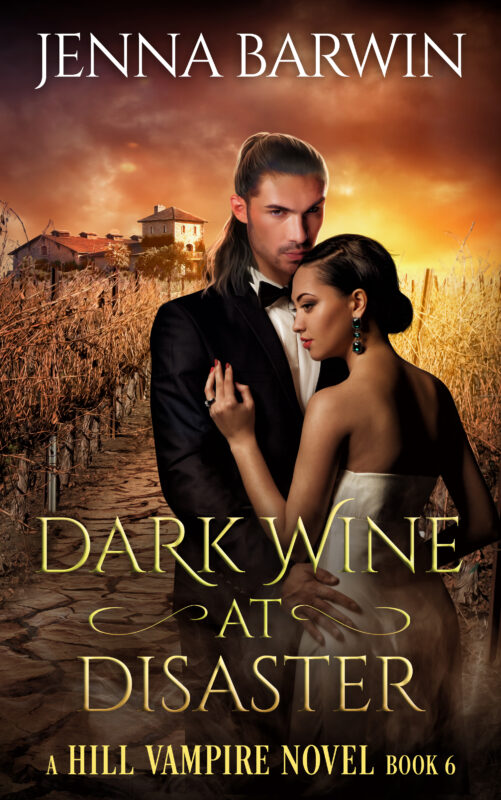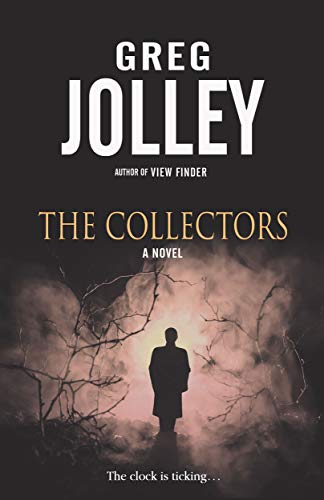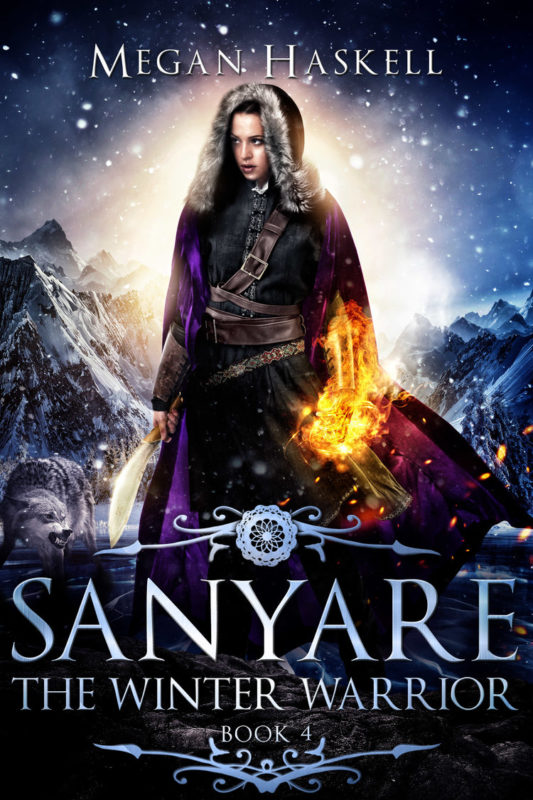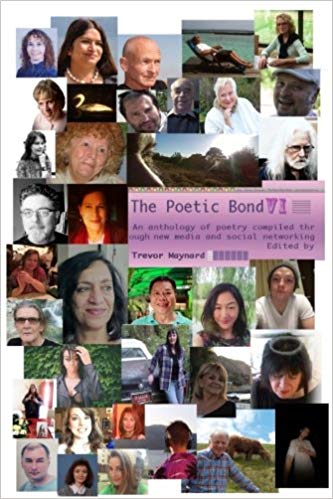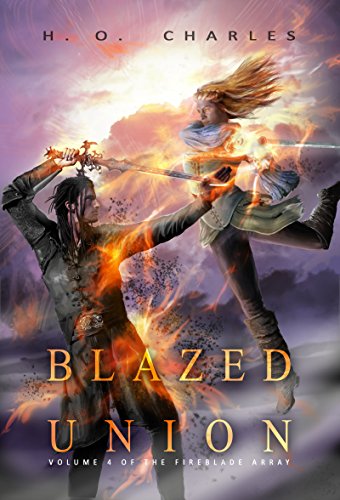Celebrating Veterans Day; Honoring the Veterans in my family
November 12, 2018 by Denise M. Colby in category The Writing Journey by Denise Colby, Writing tagged as Family, history, military, research, storiesCelebrating Veterans Day; Honoring the Veterans in My Family
By: Denise M. Colby
Since my post is set for the day we celebrate Veteran’s Day and I love history, I thought it would be fun to celebrate my family in the military and do a bit of research. I don’t have a long list of family members in the military, nor do I have a lot of stories passed down from generation to generation. What I do have are snippets and a few photos.

My great-great-great-grandfather was a Mounted Ranger and a First Dragoons
1832-34 Mounted Volunteers, Mounted Rangers, First Dragoons
I will start with my great-great-great-grandfather James Clyman, who I wrote about a few months ago. He wrote down information in his journal and it is here that I learned he enlisted as a private in a company of Mounted Volunteers on June 16, 1832. He was in the same company with Abraham Lincoln for a month (and together they fought in the Black Hawk War). He is quoted in James Clyman, Frontiersman (quoting a quote from another book by R.T. Montgomery, “Biographical Sketch of James Clyman”) of saying “We didn’t think much then about his ever being President.”

Military Inventory with James Clyman’s name on it. 1833-1834
He was then commissioned as a second lieutenant of Mounted Rangers, and later appointed as assistant commissary of subsistence for the company. It’s here that several of the receipts and inventory papers he signed are in the Huntington Library. I was able to go through these papers and take photos a couple of years ago, which was an amazing experience. And finally, I get to use them in something I’ve written.
Clyman transferred to the First Dragoons and nine months later sent in his resignation, which was accepted on May 31, 1834. He wanted to get back to his farm and business and, according to the Frontiersman, after he returned home, “he was besieged with accounts from the Commissary General of Subsistence at Washington, requesting the return of vouchers and abstracts of ration issues made during campaigns in the field, some of which were dated back to the time of his predecessor in 1832. Clyman stood charged on the books with over $400.” I’m interpreting this as basically the government sent bills to pay for the vouchers and ration issues made while he was in the field.
Unknown Stories Needing to be Found
I believe that my grandfather, Carroll W. Marsh, Sr. was in the military, but I don’t have any specifics on him. As I’m writing this, I realize I need to ask and find out something. We have lots of details on my grandmothers side of the family, but not my grandfathers.

My dad, Carroll W. Marsh, Jr.
1950 Army National Guard
Next on my list is my father, Carroll W. Marsh, Jr., who left the National Guard long before I was born, so I didn’t know him in that capacity. Nor, was his service really talked about. He didn’t fight in any wars that I’m aware of, nor did he have any big stories that were shared to me as a child. My dad passed away over twenty-one years ago and the information I have on my dad and his stint in the Army National Guard is actually very small. But, I decided to find out more.
It’s amazing to be able to research via Google. This large company photo has a title above it that says “Local Boys In Sonoma County’s National Guard Company”. One of the men holds a banner with 579HQ on it. I was able to search up the number. The 579th was an Engineering Battalion, based in Petaluma and still exists today. My dad turned 18 in 1950. I don’t know how many years he served, although I do know he was still in when my parents were married, which would’ve been beyond 1952.

My nephew, Jason
Present-day United States Navy
My nephew, Jason Burrows, just retired from the Navy earlier this year after twenty-four years of service. We are close in age, raised more like brother and sister. I’m quite proud of him. He’s been all over. Italy, Japan, Florida. On the Atlantic and the Pacific. The few times our families have gotten together, I have loved hearing his stories. The little things, that as nation we have no visibility to. The inside scoop. I remember staying on the U.S.S. Midway with my family for a scout event and finding how tiny the bunks were for even myself. I couldn’t imagine how they were for him for six months at a time given he’s 6’4”. He said when on ship he’d jog for exercise but would have to duck to clear the doorways. I loved every minute of my twenty hours on board, feeling closer and gaining an understanding of where he was and what he did.
I remember when my dad was sick and close to passing, email was new. Hard to believe now, but given my corporate job at the time, I was the only one in the family that could communicate with Jason and keep him updated so that he could be flown off the ship when the time came to come home.
I have lots more stories, but I had originally planned to keep this short, so I will save them for another time.

Another picture of my dad
As I’ve written this, I realize I have much more information than I thought I did about my family and their military history. I’m very thankful I have the ability write about it and an audience to share it with. Thank you for joining me in learning more about my family and its military roots.
I wish you and yours a Happy Veterans Day.
0 0 Read moreFinding Family Mentioned In A Novel
September 12, 2018 by Denise M. Colby in category The Writing Journey by Denise Colby, Writing tagged as historical, history, James Clyman, Writing HistoryImagine you’re reading a fiction historical romance book set in the back country of Montana and one of the characters asks another character if he’s always been a freighter.
He responds with no. He was a trapper.
Aww. Cool. Immediately my mind went to my Great-Great-Great-Grandfather who was a trapper. I continued to read.
He was a part of the great mountain men.
Wait! My Great-Great-Great-Grandfather was called that too. Now my heart was thumping faster as I continued to read. Somehow I just knew what I would see next.
Mountain men like Jedidiah Smith and Jim Clyman.
Stop the presses! That’s my Great-Great-Great-Grandfather’s name! Here in the fiction book I’m reading!!
How cool is that?
I ran around the house showing everyone my Kindle I was so excited!
A lover of all things history, I’ve wanted to write a blog post on James Clyman and our family history for a while, but I’ve been so busy with other topics, I hadn’t gotten to it, but I just had to share this exciting news and tell you a little about him now.
James Clyman. My Great-Great-Great-Grandfather.
He called himself a mountain man. A trapper with Jedidiah Smith, he was the one who sewed Jedidiah’s ear back on after a bear almost swiped it off. He also came over the pass in the sierras and encountered the Donner Party, advising them not to go that way since winter was settling in. And unfortunately they opted not to listen.
Just how do we know all this? He wrote journals. Daily. Details describing who he met and what he did. Those journals have been printed into books. One titled Frontiersman, was printed in 1960 in a limited number mostly for libraries.

He apparently wrote it all on slates and his daughter composed it into a book. I haven’t read it through completely but there’s a chapter on the Black Hawk War and being in the same unit as future President Lincoln and another on his later years when he settled in Napa, Ca.

Another smaller version came out in the 1980s. My dad signed that one for me. Writing on the inside cover that I’m the 6th generation born in Napa to James Clyman. Pretty cool.
And even more cooler…I’ve actually seen the original journals. They are in the Huntington Library in Pasadena.

A Page from a 4th Grade History book from 2014
He’s in the 4th grade history books as well, which was a real treat for my boys whenever they got to that particular unit.
He’s buried in the same cemetery as my parents and his grave is part of a historical tour they host every once in a while.
Another historical nugget – the original ranch house is still standing. My dad used to spend his summers there and when the land was sold off for housing developments my parents purchased in the neighborhood. You could see the top of the ranch house if you stood in my parents backyard.

There’s more but I’ll save that for another post. I have plans for him to make an appearance in a book or two someday. With all the books out there to read, how fascinating I found someone who beat me to it.
2 0 Read moreWhy I Love the Internet #research #birthstones #history by @LyndiLamont
July 16, 2018 by Linda McLaughlin in category The Romance Journey by Linda Mclaughlin tagged as birthstones, emeralds, history, Internet research, Linda McLaughlin, Lyndi Lamont, vintage jewelryI’ve been doing research on birthstone history and the 7th Cavalry for a new book, and I’m reminded again of how much I love the Internet.
When I started writing, the Internet was just barely starting, so I had to rely on print sources. The research for my first historical romance, Rogue’s Hostage, took a long time. Some questions I had weren’t answered until my husband and I made a trip to Quebec City in Canada! (Plus it’s always fun to see the places you’re writing about. Any excuse for a chance to travel.)
In any case, the Internet is now chock full of wonderful information for writers to access in minutes or hours, rather than days or weeks. Ah, ye old inter-library loan.
Anyway, I had decided I needed a valuable piece of jewelry for the new plot and thought it would be cool to connect it to a character’s birthstone. But how old was the concept of birthstones?
Quite old, as it turns out. Apparently the concept of assigning gems to categories goes back to the Old Testament when Aaron’s breastplate had 12 gems on it, each representing one of the tribes of Israel. In the Middle Ages, Jewish jewelers transferred the gems to the signs of the Zodiac and introduced them to Europe. It wasn’t long before the gems became associated with months of the year rather than the pagan astrological signs. You can read more about birthstone history here.
But are the birthstones still the same today? Not exactly. Here’s a graphic of the modern birthstone system, though there are now subsidiary gems assigned to the months as well. The “modern” list dates to 1912.

Birthstone Chart from Depositphotos_77526296_m-2015
Again, thanks to our wonderful World Wide Web, I was able to easily locate a Gregorian Birthstone poem that was published by Tiffany and Co. in 1870, perfect for my 1893-set Western historical romance. Most are the same, but not all. March, June, August and December vary.

golden vintage brooch with emeralds isolated on white, Deposit Photos Image ID: 194305906
Copyright: vi0222
But which gemstone to choose? Which was the most valuable at the time?
According to an article written in 1949 that some lovely person digitized and uploaded the Internet, I learned that “from 1872 to the present day (1949) the emerald has been the most expensive stone.”
Here’s the verse for the month of May:
Who first beholds the light of day
In spring’s sweet flowery month of May
And wears an emerald all her life
Shall be a loved and happy wife.
Great, but what kind of jewelry?
I talked to my neighbor, whose father was a jeweler, and she suggested a brooch. They’re not very popular now, but were in the 19th century. I found this photo of a vintage brooch at Deposit Photos and I think it will be perfect for my book, since it has not one but two large emeralds.
Would someone kill for that? Maybe, if he were desperate enough.
What are you researching?
Linda McLaughlin / Lyndi Lamont
Website/blog: https://lindalyndi.com
Now & Then: An Author Looks Back
March 15, 2018 by Rebecca Forster in category The Write Way by Maureen Child, Writing tagged as author, Craft, history, inspiration, writing I am updating my early romances and contemporary women’s fiction novels with the intention of re-releasing them. I am excited because these books were my training ground. In these pages I can hear the first tentative sounds of my distinct ‘author’s voice’. I see that I instinctively had a good grasp of what makes a story work (don’t all voracious readers have that instinct?). There is one more thing I see in these books that is hard to embrace: my major author ‘dork’. I have no other word for my early writing stumbles. Some of them were mistakes of publishing fashion and others were born from an untrained sense of drama.
I am updating my early romances and contemporary women’s fiction novels with the intention of re-releasing them. I am excited because these books were my training ground. In these pages I can hear the first tentative sounds of my distinct ‘author’s voice’. I see that I instinctively had a good grasp of what makes a story work (don’t all voracious readers have that instinct?). There is one more thing I see in these books that is hard to embrace: my major author ‘dork’. I have no other word for my early writing stumbles. Some of them were mistakes of publishing fashion and others were born from an untrained sense of drama.
Since hindsight is a wonderful thing, I thought I’d share my top three ‘author dork’ mistakes.
1) Hysterical dialogue: This is not an industry term so don’t use it with an editor. Sill, I think it perfectly describes my use of long sentences, harsh words, and huge banks of exclamation points to get across a character’s anger, distress, fear and passion.
Solution: In my later work, I learned that proper scene set-up, thoughtful exposition, and spare and realistic dialogue give me a lot more dramatic punch.
2) Fad over fashion: Within the first few pages of Seasons (a book I really love) my heroine appears in Laura Ashley dress. If you’re old enough to know who Laura Ashley is, you’re cringing at the image. If you’re not old enough to know then I have made you stumble as you try to figure it out. I have no doubt I will also run across references to big shoulder pads and power suits.
Solution: I now describe clothing generally – jeans, slacks, blazer, leather jacket – to allow the reader to fill in the detail blanks. I use color to underscore character. I never use a designer name or a fad because this dates a book. The only exception is when I need the fad to assist in a plot point. For instance, a label in a corpse’s clothing might call out a specific designer.
3) Overwriting: When I first started writing there seemed to be an accepted rule of thumb that a chapter was twenty pages, that women’s fiction and romance were not worthy unless the author lingered over love scenes and dialogue was drawn out. If there is purpose to long stretches of prose or dialogue then go for it, but if during the edit the author can’t remember what happened in the last three pages of a book then the reader won’t remember either.
Solution: Tell the story. Do not write to word length. Either the story is solid and will move along at a good clip or it won’t, either it will be 100,000 words or it won’t. The readers won’t stick with you.
The good news is that I am happy with these early books and will not fundamentally change them. I will, however, make them better by applying what I know now to what I wrote then. If only we could do the same thing with our high school yearbook pictures the world would be perfect!
Happy writing.
 Don’t forget to check out my latest release, Secret Relations, book 3 in the Finn O’Brien Thriller Series.
Don’t forget to check out my latest release, Secret Relations, book 3 in the Finn O’Brien Thriller Series.
Here’s where you can find me!
Website: http://rebeccaforster.com
Facebook:
Personal: https://www.facebook.com/rebeccaforster
Author page: https://www.facebook.com/RebeccaForster4/
Twitter: @Rebecca_Forster
Instagram: https://www.instagram.com/rebeccaforster1211/
Subscribe to my newsletter and get my 2-book starter library:
What’s for Dinner? Depends on the Century #Food #History #Research by @LyndiLamont
November 16, 2017 by Linda McLaughlin in category The Romance Journey by Linda Mclaughlin tagged as food, history, Medieval Underpants, research, ThanksgivingSince Thanksgiving is a week away, it’s only natural that many of us are thinking about food. I love autumn and all the wonderful dishes that make up the traditional Thanksgiving feast, but did you know how many of them are New World foods?

Roasted Turkey On Harvest Table – c. evgenyb – license from Bigstock.com
The food supply expanded when Columbus “discovered” the New World. There were no potatoes, yams, tomatoes, pumpkins turkeys or maize (Indian corn) in the Middle Ages.
In Medieval Underpants and Other Blunders: A Writer’s (& Editor’s) Guide to Keeping Historical Fiction Free of Common Anachronisms, Errors, & Myths, author Susanne Alleyn takes a swipe at Cinderella’s pumpkin carriage in the Disney movie. The carriage it doesn’t bother me so much, since Disney’s Cinderella is apparently set in the 18th century, if the gowns are anything to go on. At least it’s an improvement on the scene in Snow White and the Seven Dwarfs where the Huntsman leads Snow White into an American forest. I’m pretty sure I spotted a raccoon and an alligator. (Known fact: You can’t trust Hollywood when it comes to research.)
There was also no chocolate, no tea and no coffee in the Middle Ages. Peasants drank beer at every meal. The nobility drank wine. The introduction of coffee and tea in the 17th century helped to sober up Europe for the Industrial Revolution, thank goodness. Even the sober Pilgrims and Puritans drank beer in the 1600’s. If you’re writing a Medieval romance, don’t show your characters drinking tea, even if it’s herbal. The word “tea” comes from the Chinese, and didn’t enter the English language until around 1655. Herbal infusions, sometimes called tisannes, were mainly used for medicinal purposes.
Chocolate is native to the Americas, so the Spaniards were the first Europeans to encounter it. It became popular at court after the Spanish added sugar or honey to sweeten the natural bitterness. From there, chocolate spread through Europe in the 1600’s, and how thankful I am that it did. The best hot chocolate I’ve ever had was the dark, molten variety you find in France.

coffee & chocolate, image licensed from Deposit Photos
Coffee drinking started in Arabia in the middle of the 15th century and had spread to Europe in the 16th century. It became more popular after 1600 when Pope Clement VIII declared it a “Christian” beverage. When Britain cut off America’s tea supply during the War of 1812, Americans turned to coffee and we’ve been a coffee-drinking nation ever since.
Tea comes from Asia and was introduced to Holland in 1610, in common use by 1675; introduced to England about 1660, where it steadily increased in popularity. The ritual we know as afternoon tea didn’t start until the 1840s. Afternoon tea was for the idle rich and includes finger sandwiches, scones and pastries. High tea, which isn’t nearly as grand as it sounds, was the name for the evening meal used by the working class and features a hot dish like a meat pie or stew.
Happy Thanksgiving!
Linda McLaughlin w/a Lyndi Lamont
Website: https://lindalyndi.com
Affiliate Links
A Slice of Orange is an affiliate with some of the booksellers listed on this website, including Barnes & Nobel, Books A Million, iBooks, Kobo, and Smashwords. This means A Slice of Orange may earn a small advertising fee from sales made through the links used on this website. There are reminders of these affiliate links on the pages for individual books.
Search A Slice of Orange
Find a Column
Archives
Featured Books
SANYARE: THE WINTER WARRIOR
Her choice won the war, but may have cost her everything…
More info →BLAZED UNION
Fate has other plans for those with fire and fury in their hearts.
More info →Newsletter
Contributing Authors
Search A Slice of Orange
Find a Column
Archives
Authors in the Bookstore
- A. E. Decker
- A. J. Scudiere
- A.J. Sidransky
- A.M. Roark
- Abby Collette
- Alanna Lucus
- Albert Marrin
- Alice Duncan
- Alina K. Field
- Alison Green Myers
- Andi Lawrencovna
- Andrew C Raiford
- Angela Pryce
- Aviva Vaughn
- Barbara Ankrum
- Bethlehem Writers Group, LLC
- Carol L. Wright
- Celeste Barclay
- Christina Alexandra
- Christopher D. Ochs
- Claire Davon
- Claire Naden
- Courtnee Turner Hoyle
- Courtney Annicchiarico
- D. Lieber
- Daniel V. Meier Jr.
- Debra Dixon
- Debra H. Goldstein
- Debra Holland
- Dee Ann Palmer
- Denise M. Colby
- Diane Benefiel
- Diane Sismour
- Dianna Sinovic
- DT Krippene
- E.B. Dawson
- Emilie Dallaire
- Emily Brightwell
- Emily PW Murphy
- Fae Rowen
- Faith L. Justice
- Frances Amati
- Geralyn Corcillo
- Glynnis Campbell
- Greg Jolley
- H. O. Charles
- Jaclyn Roché
- Jacqueline Diamond
- Janet Lynn and Will Zeilinger
- Jaya Mehta
- Jeannine Atkins
- Jeff Baird
- Jenna Barwin
- Jenne Kern
- Jennifer D. Bokal
- Jennifer Lyon
- Jerome W. McFadden
- Jill Piscitello
- Jina Bacarr
- Jo A. Hiestand
- Jodi Bogert
- Jolina Petersheim
- Jonathan Maberry
- Joy Allyson
- Judy Duarte
- Justin Murphy
- Justine Davis
- Kat Martin
- Kidd Wadsworth
- Kitty Bucholtz
- Kristy Tate
- Larry Deibert
- Larry Hamilton
- Laura Drake
- Laurie Stevens
- Leslie Knowles
- Li-Ying Lundquist
- Linda Carroll-Bradd
- Linda Lappin
- Linda McLaughlin
- Linda O. Johnston
- Lisa Preston
- Lolo Paige
- Loran Holt
- Lynette M. Burrows
- Lyssa Kay Adams
- Madeline Ash
- Margarita Engle
- Marguerite Quantaine
- Marianne H. Donley
- Mary Castillo
- Maureen Klovers
- Megan Haskell
- Melanie Waterbury
- Melisa Rivero
- Melissa Chambers
- Melodie Winawer
- Meriam Wilhelm
- Mikel J. Wilson
- Mindy Neff
- Monica McCabe
- Nancy Brashear
- Neetu Malik
- Nikki Prince
- Once Upon Anthologies
- Paula Gail Benson
- Penny Reid
- Peter J Barbour
- Priscilla Oliveras
- R. H. Kohno
- Rachel Hailey
- Ralph Hieb
- Ramcy Diek
- Ransom Stephens
- Rebecca Forster
- Renae Wrich
- Roxy Matthews
- Ryder Hunte Clancy
- Sally Paradysz
- Sheila Colón-Bagley
- Simone de Muñoz
- Sophie Barnes
- Susan Kaye Quinn
- Susan Lynn Meyer
- Susan Squires
- T. D. Fox
- Tara C. Allred
- Tara Lain
- Tari Lynn Jewett
- Terri Osburn
- Tracy Reed
- Vera Jane Cook
- Vicki Crum
- Writing Something Romantic
Affiliate Links
A Slice of Orange is an affiliate with some of the booksellers listed on this website, including Barnes & Nobel, Books A Million, iBooks, Kobo, and Smashwords. This means A Slice of Orange may earn a small advertising fee from sales made through the links used on this website. There are reminders of these affiliate links on the pages for individual books.



